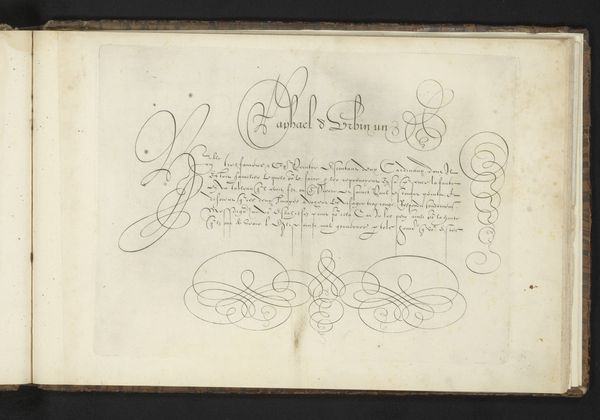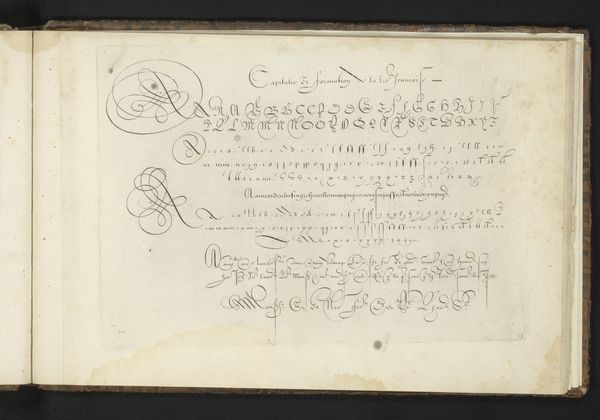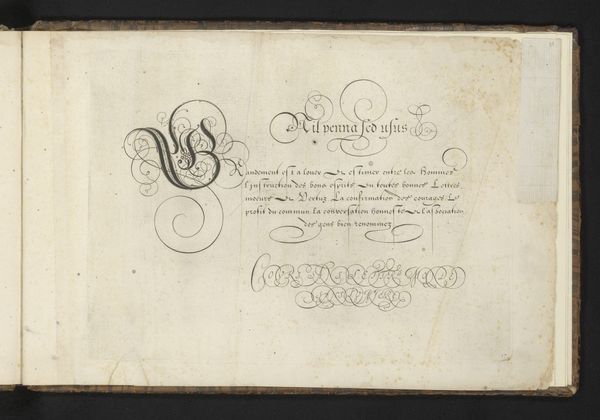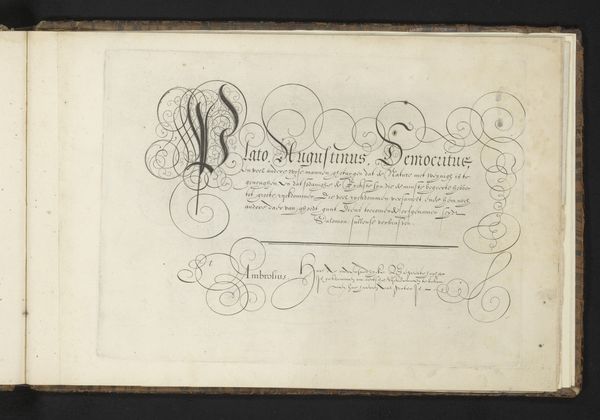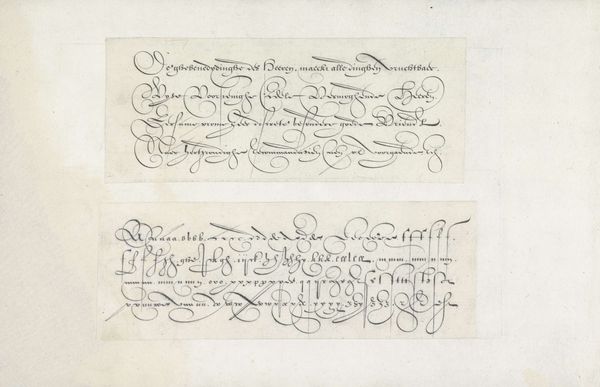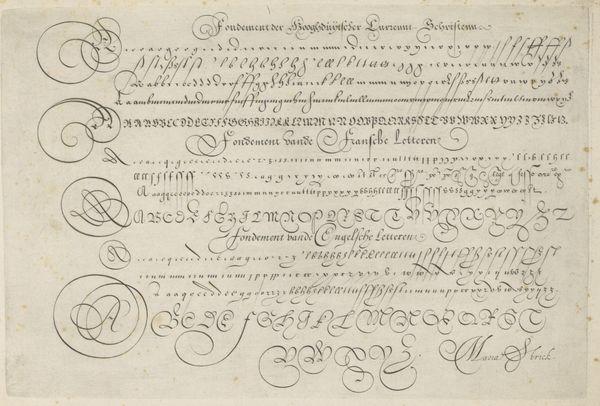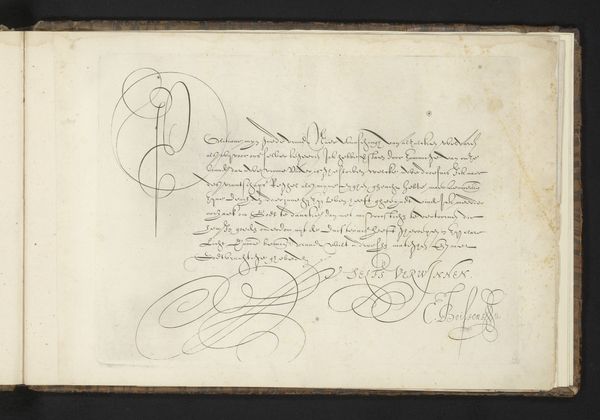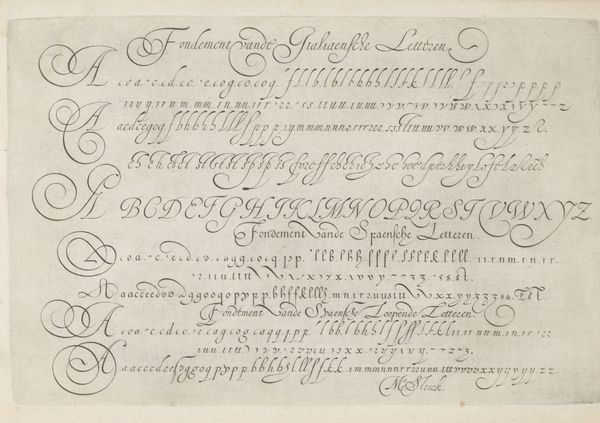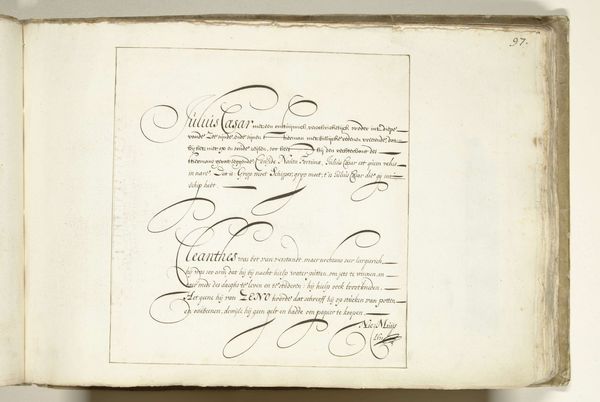
drawing, paper, ink
#
drawing
#
aged paper
#
hand written
#
medieval
#
hand-lettering
#
ink paper printed
#
asian-art
#
hand drawn type
#
hand lettering
#
paper
#
form
#
11_renaissance
#
personal sketchbook
#
ink
#
hand-written
#
hand-drawn typeface
#
geometric
#
line
#
sketchbook art
#
calligraphy
Dimensions: height 195 mm, width 273 mm, height 227 mm, width 345 mm
Copyright: Rijks Museum: Open Domain
Curator: The careful rendering and precise strokes convey much about the period's ideals of knowledge and skill. What strikes you first about this 1605 ink drawing, titled *Schrijfvoorbeeld: de Nederlandse letter* by Cornelis Dircksz. Boissens? Editor: It feels like a historical document, but also a very personal expression. The ink on paper gives it a delicate, almost fragile quality, while the script itself is so ornate. What's most fascinating to you about this calligraphic drawing? Curator: I am drawn to how calligraphy, historically, serves as more than mere writing. It embodies power structures, class, and access to education. Do you notice how the controlled hand and elaborate forms showcase both the mastery and exclusivity of literacy at the time? Consider the relationship between literacy, power, and gender in early 17th century Netherlands; who had access to this skill and what did it signify? Editor: So it's not just about pretty handwriting? Curator: Absolutely not! It is about how control over language translates to control in other domains. This drawing demonstrates an interesting convergence of art and social commentary when considered alongside socio-economic realities of the era. Do the repetitive, practiced letterforms make you think about labor and production, too? Editor: I hadn't considered the labor aspect before. It definitely brings to mind the intense practice required to achieve such uniformity. Also, the display of dutch letters implies an urge to create or promote a cultural identity. It almost seems political when seen this way. Curator: Exactly! It challenges us to consider calligraphy as more than just aesthetic expression, and allows us to see it as a tool deeply interwoven within the cultural and political landscape of the Dutch Renaissance. It's important to ask: who was this "Schrijfvoorbeeld" for, and what social function did it serve? Editor: It is truly incredible to consider how something as simple as handwriting can contain so much social meaning! Curator: Precisely. Recognizing art’s entanglement with society encourages a more thoughtful engagement.
Comments
No comments
Be the first to comment and join the conversation on the ultimate creative platform.
